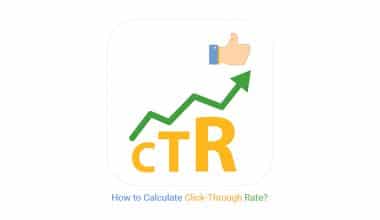In the fast-paced world of marketing, having a creative platform is critical for sticking out and connecting with your target audience. I recall the first time I was tasked with creating a creative platform; the process felt daunting. But as I dug deeper, I learned it’s a combination of strategy, creativity, and understanding your target audience. In this article, I’ll lead you through the process of writing a creative platform, giving insights and strategies that go beyond the basics to help you effectively engage with your target market.
What is a Creative Platform?
A creative platform serves as the strategic framework for all of a brand’s creative endeavors. It includes the main messages, tone, and visual components that will be used consistently across all marketing platforms. Consider it a plan that guarantees your marketing campaigns are consistent and aligned with your brand’s identity and goals.
Why Is a Creative Platform Important?
Creating a creative platform is critical for maintaining consistency across various marketing campaigns, ensuring that every piece of content reflects the brand’s core values and message. Lucidpress found that consistent branding can improve income by up to 23%. This emphasizes the importance of having a clearly defined creative platform to lead your marketing efforts.
Components of a Creative Platform
#1. Brand strategy and research
Building an effective creative platform begins with research. It’s critical to delve deeply into the nuances of your brand, business, and competitive landscape. This could include competitive and current marketing audits, market and consumer research, internal and external stakeholder interviews, and even assessments of brand architecture and identity development. The idea here is to discover the whitespace in which your brand may carve out a distinct, authentic positioning that will resonate with the market.
As a B2B marketing agency specializing in brand strategy and creative services across industries ranging from financial and professional services to automation and industrial manufacturing to trade associations and beyond, we’ve witnessed firsthand how important this phase is to success.
From there, the baton is often passed to the creative team, who are given a hyper-focused briefing paper that serves as a springboard for their ideation while also providing strategic direction and guardrails.
Ready to define your brand’s mission and make a lasting impact? Download our Brand Mission Statement Template now and start crafting a mission that resonates with your audience and drives your business forward. Don’t let your brand go unnoticed—create a compelling mission today!
Brand Mission Statement Template
#2. Concept
Concepts, like campaigns, should align with a basic human insight to generate a strong brand statement that unifies all marketing activities. Unlike previous efforts, this message will focus on the brand’s purpose and story. Again, the idea is to alter perceptions.
#3. Brand Campaign
While a creative platform can be an internal manifestation at times, it is frequently expressed externally through a brand campaign. Yes, this is where it frequently becomes a little of a word soup, as we like to call it.
The essential thing to remember is that a platform should never be rigid; rather, it should be a creative expression that is congruent with your brand. The various campaigns that may launch on that platform allow you to make changes or evolutions based on what is happening in your business or the world at the time.
Step-by-Step Guide for Writing a Creative Platform
Developing a creative platform is critical for any brand seeking to develop a strong, coherent presence in the market. It’s a blueprint that guarantees your creative efforts are consistent with your brand’s identity and goals, resulting in more effective marketing campaigns. I recall the hurdles we had when establishing our creative platform. It needed careful planning, teamwork, and ongoing refinement to get it perfect. Here, I’ll share the methods we followed and the lessons we learned to help you create a creative platform that actually connects with your target audience.
Step #1: Identify your brand’s core values and mission.
Begin by clearly outlining your brand’s key beliefs and mission. This phase is critical because it establishes the foundation of your creative platform. These should resonate with your target demographic and set your business apart from the competition.
When we first started this adventure, we hosted workshops with our staff to brainstorm and cement our key principles. This collaborative approach guaranteed that everyone was on the same page and understood exactly what our brand stood for. We noticed that having multiple perspectives from other departments broadened our understanding and assisted us in developing a more strong and inclusive set of values.
Step #2: Understand Your Target Audience
Knowing your audience is essential for establishing a compelling creative platform. Conduct market research to learn about your target population’s tastes and behaviors. Tools such as Google Analytics and social media insights can provide useful information.
In our situation, we employed consumer surveys and focus groups to better understand our target population. This information was critical in developing our messaging and creative direction. For example, we discovered that our audience valued sustainability, so we emphasized environmentally friendly methods in our brand messaging.
Step #3: Create Key Messages
Your key messages should capture the spirit of your brand and what it stands for. These communications must be clear, simple, and relevant to your target audience.
We created a series of key messages emphasizing our brand’s unique selling qualities and beliefs. Each communication was tailored to our audience’s requirements and interests, making them feel understood and cherished. We were able to improve the effectiveness of these messages by testing them in small focus groups.
Step #4: Determine your brand’s tone of voice
The tone of voice is the way your brand communicates with its audience. It should convey your brand’s identity and be consistent across all platforms.
For us, creating our tone of voice was thinking about how we wanted our audience to perceive us—whether as nice and approachable or professional and authoritative. This decision informed our copywriting and communication strategy on all platforms. We even prepared a tone of voice guide with examples to help our staff maintain consistency across all discussions.
Step #5: Establish Visual Guidelines
Visual aspects are an important aspect of your creative platform. Define your logo, color scheme, font, and visual styles. These characteristics must be consistent to ensure brand identification.
We collaborated with a designer to develop a visual style guide that incorporates all of these features. This guide was used as a reference for all subsequent creative work, guaranteeing uniformity in our visual presentation. We discovered that having a precise visual guide not only helped to keep a consistent appearance but also saved time during the design process.
Step #6: Create a Content Strategy
Your content strategy should define how you want to communicate your main messages and graphic elements through various platforms. This involves selecting what kind of material you’ll produce, such as blog entries, videos, social media updates, and so on.
In our experience, having a precise content calendar allowed us to stay organized and consistent with our message. It also enabled us to organize material following significant campaigns and events. For example, we planned seasonal material far in advance to ensure timely and relevant messaging.
Step #7: Implement and Monitor
Once your creative platform has been built, it is time to integrate it into all marketing initiatives. Monitor the performance of your campaigns and collect feedback to make required changes.
We employed analytics tools to monitor the effectiveness of our ads and find areas for improvement. Regular reviews guaranteed that our creative platform was still relevant and effective. Setting clear KPIs and periodically analyzing them allowed us to quickly adapt our strategies to shifting market demands.
By following these steps, you can create a creative platform that not only corresponds with your brand’s core values and mission but also resonates with your target audience and distinguishes itself in a competitive market.
Creative Platform Examples
#1. IBM: “Let’s create”
In 2022, IBM unveiled its new brand campaign and global platform, “Let’s Create.” With an emphasis on innovation and change, this platform offers a straightforward, intelligent, and exciting example of investing in your brand’s future. It’s a challenge to its viewers, its own teams, and the world to make their dreams a reality. While the platform began with a ‘Let’s Create’ brand campaign, it is now in phase 2 with a ‘What If’ campaign this year.
#2. CNA Financial: “Our commitment”
As a challenger brand trying to compete with top-tier organizations, CNA Financial sought to take charge of its narrative and establish itself as an industry leader. The ‘Our dedication’ platform highlighted their dedication to helping brokers, agents, policyholders, and staff by focusing on the brand’s differentiators and portraying them as competitive advantages for both parties.
How Does a Creative Platform Improve Brand Consideration?
A creative platform promotes consistency in your messaging and graphics, fostering trust and recognition among your target audience. Consistency helps to reinforce your brand’s identity, increasing the likelihood that consumers would consider your brand when making purchasing decisions.
What Role Does Story-telling Serve in a Creative Platform?
Storytelling is an extremely effective technique in a creative platform. It humanizes your brand and makes it more appealing to your target audience. Sharing stories that match your brand’s beliefs and mission can help you build emotional connections and increase brand consideration.
How Can Market Research Boost the Effectiveness of a Creative Platform?
Market research gives information about your target audience’s tastes, behaviors, and pain concerns. This information is critical for developing a creative platform that connects with your target audience and meets their demands, hence increasing its efficacy.
What are the Basic Components of an Effective Creative Platform?
A successful creative platform requires clearly defined brand values and mission, an awareness of the target audience, well-crafted core messaging, a consistent tone of voice, and unified visual guidelines. Together, these pieces create a cohesive and effective brand presence.
How Frequently Should Creative Platforms Be Examined and Updated?
A creative platform should be assessed regularly to guarantee its relevance and effectiveness. Conduct a review at least once a year, or if there are substantial changes in the market, your firm, or consumer preferences.
Key takeaways
- A clear definition of your brand’s fundamental values and mission is essential for building an effective creative platform.
- Conducting thorough market research is critical for tailoring your creative platform to engage with your target audience.
- Using a consistent tone of voice and visual identity across all media helps to establish brand awareness and trust.
- Incorporating narrative into your creative platform can help you connect with your audience emotionally.
- Regularly reviewing and upgrading your creative platform keeps it relevant and effective in a changing industry.
Conclusion
Creating an effective creative platform is critical for marketers looking to establish a strong, identifiable brand. By following these steps and focusing on consistency and audience knowledge, you can build a platform that not only appeals to your target demographic but also encourages brand attention and loyalty. What hurdles did you confront when creating your creative platform, and how did you overcome them? Let us share our experiences and insights!
Related Articles
- 9 Strategies for Enhancing Your B2B Marketing Campaigns through Content Syndication
- The Campaign Optimization Secrets Big Brands Don’t Want You to Know
- PR Campaign Secrets: How Top Brands Dominate the Spotlight
- A Breakdown of Brand Sentiment: Analysis, Tools, Metrics and Best Practices for 2024
- Social Signals: Elevating Your Brand’s Digital Footprint






